 W
WThe Tupolev ANT-1 was Tupolev OKB's first aircraft, designed by Andrei Tupolev based on his work with aerosleighs and boats. An experimental aircraft, it was expected to be used to examine Tupolev's ideas and to help the Soviets understand the use of metal in aircraft manufacturing.
 W
WThe ANT-2 was the first all-metal aircraft designed by the Tupolev design bureau. A small passenger plane, it could carry two passengers in a cabin behind the pilot.
 W
WTupolev acquired much experience in building his first two aircraft, which he employed for the next one, the ANT-3. By this time, Soviet Air Force leaders were convinced that metal was a highly usable substance in the building of airplanes. Tupolev therefore guided AGOS- TsAGI in creating the first Soviet all-metal aircraft. The ANT-3 was Tupolev's first practical aircraft.
 W
WThe Tupolev ANT-7, known by the VVS as the Tupolev R-6, was a reconnaissance aircraft and escort fighter of the Soviet Union. The R-6 traces its roots back to early 1928 when the Soviet Air Force needed a long-range multirole aircraft. The requirements were that it could be used for long-range transport, defensive patrolling, reconnaissance, light bombing and torpedo attack.
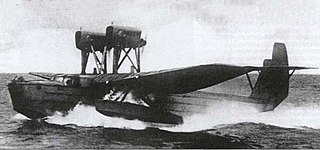 W
WThe ANT-8 was an experimental flying boat designed by Tupolev. It was designated the "MDR-2" by the military.
 W
WThe Tupolev ANT-9 was a Soviet passenger aircraft of the 1930s. It was developed as a reaction to the demand for a domestic airliner. At this time Deruluft, one of the forerunners of Aeroflot, flew only with foreign models, which were mainly German or Dutch.
 W
WThe Tupolev ANT-14 Pravda was a Soviet aircraft, which served as the flagship of the Soviet propaganda squadron. It has been credited as Russia's first all-metal aircraft, with a corrosion-resistant-steel structure.
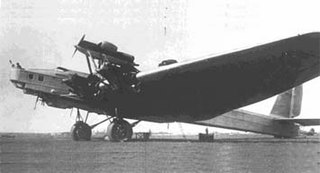 W
WThe Tupolev ANT-16 was an experimental heavy bomber aircraft designed and tested in the Soviet Union in the early 1930s.
 W
WThe Tupolev ANT-20 Maxim Gorky was a Soviet eight-engine aircraft, the largest in the world during the 1930s. Its wingspan was similar to that of a modern Boeing 747, and was not exceeded until the 64.6-metre (212 ft) wingspan Douglas XB-19 heavy bomber prototype first flew in 1941.
 W
WThe Tupolev ANT-22 was a large flying boat built in the Soviet Union in 1934. A huge aircraft consisting of two hulls and powered by six engines in three nacelles in a push-pull configuration, it was based on the ANT-11, which was never built. Its enormous weight severely crippled its performance, and it never proceeded beyond the experimental stage.
 W
WThe Tupolev ANT-25 was a Soviet long-range experimental aircraft which was also tried as a bomber. First constructed in 1933, it was used by the Soviet Union for a number of record-breaking flights.
 W
WThe Tupolev ANT-35 was a 1930s Soviet twin-engined light transport monoplane that entered service with Aeroflot in 1937 as the Tupolev PS-35.
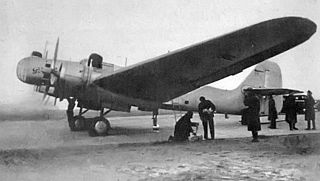 W
WThe Tupolev ANT-37 was a Soviet twin-engined long-range bomber designed and built by the Tupolev design bureau, the design team operating under the guidance of Pavel Sukhoi. The aircraft did not enter production, but three examples of the type were used for research and record breaking flights.
 W
WThe Tupolev ANT-53 was a late 1930s project for a passenger aircraft by the Tupolev Design Bureau.
 W
WThe Tupolev I-4 was a Soviet sesquiplane single-seat fighter. It was conceived in 1927 by Pavel Sukhoi as his first aircraft design for the Tupolev design bureau, and was the first Soviet all-metal fighter.
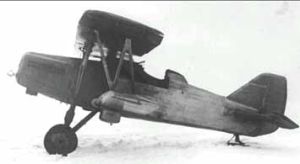 W
WThe Tupolev I-8 was an experimental interceptor built in the Soviet Union in the early 1930s. It was the first Soviet aircraft to exceed 300 km/h in level flight. The aircraft was an exercise in developing the Polikarpov I-5 design by a group of engineers led by V. M. Rodionov, each of whom volunteered 70 hours of personal time to the project.
 W
WThe Tupolev I-12 was a prototype Soviet fighter aircraft that never reached production. The I-12 was of unconventional design with twin booms made of water pipes containing recoilless rifles and two engines in a push-pull configuration. The aircraft first flew in 1931 but did not enter production due to disappointing performance and operational difficulties such as the inability for the pilot to escape the aircraft without hitting the propeller arc behind him. The second prototype from Tupolev was never completed.
 W
WThe Tupolev I-14 was a Soviet fighter aircraft of the 1930s. It was a single-engined, single-seat monoplane with retractable undercarriage, designed to carry heavy armament, and as such was one of the most advanced fighters of its time. It was ordered into production, but this was cancelled after only a small number had been built, the competing Polikarpov I-16 being preferred.
 W
WThe Tupolev MTB-2, also known as the ANT-44, was a Soviet four-engine flying boat built in the late 1930s. Two prototypes were built; performance was satisfactory, but the design was overtaken by the fielding of long-range, land-based bombers by Soviet Naval Aviation and cancelled in 1940.
 W
WThe Tupolev ANT-40, also known by its service name Tupolev SB and development co-name TsAGI-40, was a high speed twin-engined three-seat monoplane bomber, first flown in 1934. The Tupolev design was advanced but lacked refinement, much to the dismay of crews, maintenance personnel, and Stalin, who pointed out that "there are no trivialities in aviation".
 W
WThe Tupolev TB-1 was a Soviet bomber aircraft, an angular monoplane that served as the backbone of the Soviet bomber force for many years, and was the first large all-metal aircraft built in the Soviet Union.
 W
WThe Tupolev TB-3 was a monoplane heavy bomber deployed by the Soviet Air Force in the 1930s and used during the early years of World War II. It was the world's first cantilever wing four-engine heavy bomber. Despite obsolescence and being officially withdrawn from service in 1939, the TB-3 performed bomber and transport duties throughout much of World War II. The TB-3 also saw combat as a Zveno project fighter mothership and as a light tank transport.
 W
WTupolev TB-6 was a proposal by the Tupolev Design Bureau in the 1930s for a super-heavy bomber. Had it been built, it would have been the biggest-ever Soviet bomber and the largest aircraft by wingspan of its time, nine feet short of the 320 foot span of the Hughes H-4 Hercules, although the Scaled Composites Stratolaunch is now the biggest plane by wingspan.
 W
WThe Tupolev Tu-1 was a prototype Soviet night fighter variant of the Tupolev Tu-2 medium bomber that first flew after the end of World War II. It was cancelled when its experimental Mikulin AM-43V engines reached the end of their service life.
 W
WThe Tupolev Tu-2 was a twin-engine Soviet high-speed daylight and frontline bomber aircraft of World War II vintage. The Tu-2 was tailored to meet a requirement for a high-speed bomber or dive-bomber, with a large internal bombload, and speed similar to that of a single-seat fighter. Designed to challenge the German Junkers Ju 88, the Tu-2 proved comparable, and was produced in torpedo, interceptor, and reconnaissance versions. The Tu-2 was one of the outstanding combat aircraft of World War II and it played a key role in the Red Army's final offensives.
 W
WThe Tupolev Tu-4 is a piston-engined Soviet strategic bomber that served the Soviet Air Force from the late 1940s to mid-1960s. It was reverse-engineered from the American Boeing B-29 Superfortress.
 W
WThe Tupolev Tu-8, OKB designation '69', was a long-range variant of the Soviet Tupolev Tu-2 medium bomber that first flew after the end of World War II. It was canceled when it proved to be unstable, structurally unsound and its generators were not strong enough to fully power its gun turrets. With the advent of jet-powered bombers, Soviet military planners decided that it simply was not worth devoting the necessary resources to fix its numerous problems.
 W
WThe Tupolev Tu-12 was an experimental Soviet jet-powered medium bomber developed from the successful piston-engined Tupolev Tu-2 bomber after the end of World War II. It was designed as a transitional aircraft to familiarize Tupolev and the VVS with the issues involved with jet-engined bombers.
 W
WThe Tupolev Tu-14, was a Soviet twinjet light bomber derived from the Tupolev Tu 73, the failed competitor to the Ilyushin Il-28 'Beagle'. It was used as a torpedo bomber by the mine-torpedo regiments of Soviet Naval Aviation between 1952–59 and exported to the People's Republic of China.
 W
WThe Tupolev Tu-16 was a twin-engined jet strategic heavy bomber used by the Soviet Union. It has flown for more than 60 years, and the Chinese licence-built Xian H-6 remains in service with the People's Liberation Army Air Force.
 W
WThe Tupolev Tu-22 was the first supersonic bomber to enter production in the Soviet Union. Manufactured by Tupolev, the Tu-22 entered service with the Soviet military in the 1960s. The last examples were retired during the early 2000s. Produced in comparatively small numbers, the aircraft was a disappointment, lacking the intercontinental range that had been expected. Later in their service life, Tu-22s were used as launch platforms for the Soviet Kh-22 standoff missile, and as reconnaissance aircraft. Tu-22s were sold to other nations, including Libya and Iraq. The Tu-22 was one of the few Soviet bombers to see combat; Libyan Tu-22s were used against Tanzania and Chad, and Iraqi Tu-22s were used during the Iran–Iraq War.
 W
WThe Tupolev Tu-22M is a supersonic, variable-sweep wing, long-range strategic and maritime strike bomber developed by the Tupolev Design Bureau in the 1960s. According to some sources, the bomber was believed to be designated Tu-26 at one time. During the Cold War, the Tu-22M was operated by the Soviet Air Forces (VVS) in a missile carrier strategic bombing role, and by the Soviet Naval Aviation in a long-range maritime anti-shipping role. Significant numbers remain in service with the Russian Air Force, and as of 2014 more than 100 Tu-22Ms are in use.
 W
WThe Tupolev Tu-28 was a long-range interceptor aircraft introduced by the Soviet Union in the 1960s. The official designation was Tu-128, but this designation was less commonly used in the West. It was the largest and heaviest fighter ever in service.
 W
WThe Tupolev '73',, was a Soviet trijet medium bomber of the late 1940s. It lost out to the Ilyushin Il-28 'Beagle'.
 W
WThe Tupolev Tu-80 was a Soviet prototype for a longer-ranged version of the Tupolev Tu-4 bomber, built after World War II. It was cancelled in 1949 in favor of the Tupolev Tu-85 program which offered even more range. The sole prototype was used in various test programs before finally being used as a target.
 W
WThe Tupolev Tu-85 was a Soviet prototype strategic bomber based on the Tu-4, an unlicensed reverse engineered copy of the Boeing B-29 Superfortress. It was the ultimate development of the B-29 family, being over 50% heavier than its progenitor and had nearly double the range. Only two prototypes were built before the program was cancelled in favor of the Tupolev Tu-95 bomber which was much faster and had the same range.
 W
WThe Tupolev Tu-95 is a large, four-engine turboprop-powered strategic bomber and missile platform. First flown in 1952, the Tu-95 entered service with the Long-Range Aviation of the Soviet Air Forces in 1956 and is expected to serve the Russian Aerospace Forces until at least 2040. A development of the bomber for maritime patrol is designated Tu-142, while a passenger airliner derivative was called Tu-114.
 W
WThe Tupolev Tu-98 was a prototype swept wing jet bomber developed by Tupolev for the Soviet Union.
 W
WThe Tupolev Tu-104 was a twinjet medium-range narrow-body turbojet-powered Soviet airliner. It was the second to enter regular service, behind the British de Havilland Comet, and was the only jetliner operating in the world from 1956 to 1958, when the British jetliner was grounded due to safety concerns.
 W
WThe Tupolev Tu-110 was a jet airliner designed and built in the USSR, which saw its maiden flight in 1957.
 W
WThe Tupolev Tu-114 Rossiya was a turboprop-powered long-range airliner designed by the Tupolev design bureau and built in the Soviet Union from May 1955. The aircraft was the largest and fastest passenger plane at that time and also had the longest range, at 10,900 km (6,800 mi). It has held the official title of fastest propeller-driven aircraft since 1960.
 W
WThe Tupolev Tu-116 is a turboprop-powered long-range airliner designed by the Tupolev design bureau and built in the USSR.
 W
WThe Tupolev Tu-95LAL,, was an experimental aircraft that was a modified Tupolev Tu-95 Soviet bomber aircraft, which flew from 1961 to 1965, analogous to the United States' earlier Convair NB-36H. It was intended to see whether a nuclear reactor could be used to power an aircraft, primarily testing airborne operation of a reactor and shielding for components and crew.
 W
WThe Tupolev Tu-123 Yastreb was one of the earliest Soviet reconnaissance drones that began development in 1960. Sometimes referred to as the "DBR-1", it was introduced into active service in 1964.
 W
WThe Tupolev Tu-124 was a 56-passenger short-range twinjet airliner built in the Soviet Union. It was the first Soviet airliner powered by turbofan engines.
 W
WThe Tupolev Tu-126 was an airborne early warning and control aircraft developed from the Tupolev Tu-114 airliner by the Tupolev design bureau. It was in service with the armed forces of the Soviet Union from 1965 to 1984.
 W
WThe Tupolev Tu-134 is a twin-engined, narrow-body, jet airliner built in the Soviet Union from 1966 to 1989. The original version featured a glazed-nose design and, like certain other Russian airliners, it can operate from unpaved airfields.
 W
WThe Tupolev Tu-141 Strizh is a Soviet reconnaissance drone that served with the Soviet Red Army during the late 1970s and 1980s.
 W
WThe Tupolev Tu-142 is a Soviet/Russian maritime reconnaissance and anti-submarine warfare (ASW) aircraft derived from the Tu-95 turboprop strategic bomber. A specialised communications variant designated Tu-142MR was tasked with long-range communications duties with Soviet ballistic missile submarines. The Tu-142 was designed by the Tupolev design bureau, and manufactured by the Kuibyshev Aviation and Taganrog Machinery Plants from 1968 to 1994. Formerly operated by the Soviet Navy and Ukrainian Air Force, the Tu-142 currently serves with the Russian Navy.
 W
WThe Tupolev Tu-143 Reys was a Soviet unmanned reconnaissance aircraft in service with the Soviet Army and a number of its Warsaw Pact and Middle East allies during the late 1970s and 1980s. It contained a reconnaissance pod that was retrieved after flight, and from which imagery was contained.
 W
WThe Tupolev Tu-144 is a Soviet supersonic passenger airliner designed by Tupolev in operation from 1968 to 1999.
 W
WThe Tupolev Tu-154 is a three-engine medium-range narrow-body airliner designed in the mid-1960s and manufactured by Tupolev. A workhorse of Soviet and (subsequently) Russian airlines for several decades, it carried half of all passengers flown by Aeroflot and its subsidiaries, remaining the standard domestic-route airliner of Russia and former Soviet states until the mid-2000s. It was exported to 17 non-Russian airlines and used as a head-of-state transport by the air forces of several countries.
 W
WThe Tupolev Tu-155 is a modified Tupolev Tu-154 (СССР-85035) which was used as an alternative fuel testbed, and was the world's first experimental aircraft operating on hydrogen and later liquid natural gas. The similar Tu-156 was never built.
 W
WThe Tupolev Tu-160 is a supersonic, variable-sweep wing heavy strategic bomber designed by the Tupolev Design Bureau in the Soviet Union in the 1970s. It is the largest and heaviest Mach 2+ supersonic military aircraft ever built and next to the experimental XB-70 Valkyrie in overall length. As of 2021, it is the largest and heaviest combat aircraft, the fastest bomber in use and the largest and heaviest variable-sweep wing airplane ever flown.
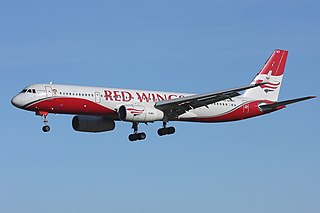 W
WThe Tupolev Tu-204 is a twin-engined medium-range narrow-body jet airliner capable of carrying 210 passengers, designed by Tupolev and produced by Aviastar-SP and Kazan Aircraft Production Association. First introduced in 1989, it is intended to be broadly equivalent to the Boeing 757, with slightly lower range and payload, and has competitive performance and fuel efficiency in its class. It was developed for Aeroflot as a replacement for the medium-range Tupolev Tu-154 trijet. The latest version, with significant upgrades and improvements, is the Tu-204SM, which made its maiden flight on 29 December 2010.
 W
WThe Tupolev Tu-244 was a proposed supersonic transport (SST) aircraft, developed from the Tu-144. It implemented novel features such as cryogenic fuel to enable flight distances of up to 10.000 km (6.214 mi) and would have carried up to 300 passengers. The project was cancelled in 1993.
 W
WThe Tupolev Tu-324 is a 30–50 seat regional jet passenger airliner. The jet will be twin-powered by Ivchenko-Progress AI-22 or Rolls-Royce BR710 turbofan engines. The plane will be available as a corporate plane for eight–ten executives. The range for the three aircraft variants will be 2500 km, 5000 km and 7000 km. The cargo version can carry 3000 kg of cargo and a range of 5900 km is expected. The Tu-324 is designed to replace aging Yak-40, Tu-134, An-24 and An-26s on Russia's regional routes.
 W
WThe Tupolev Tu-330 was a proposed Russian medium-size transport aircraft developed by Tupolev since the early 1990s. The project was stopped around 2000s due to lack of funding and difficult economic situation of the Russian aircraft industry at the time.
 W
WThe Tupolev Tu-334 was a Russian short-to-medium range airliner project that was developed to replace the ageing Tu-134s and Yak-42s in service around the world. The airframe was based on a shortened Tu-204 fuselage and a scaled-down version of that aircraft's wing. Unlike the Tu-204, however, the Tu-334 has a T-tail and engines mounted on the sides of the rear fuselage instead of under the wings. With the rationalisation of the Russian aircraft companies in 2009 to form United Aircraft Corporation it was decided not to continue with the programme.
 W
WTu-130 was a concept for a boost-glider launched by an intercontinental three-stage missile by Soviet designer Tupolev.